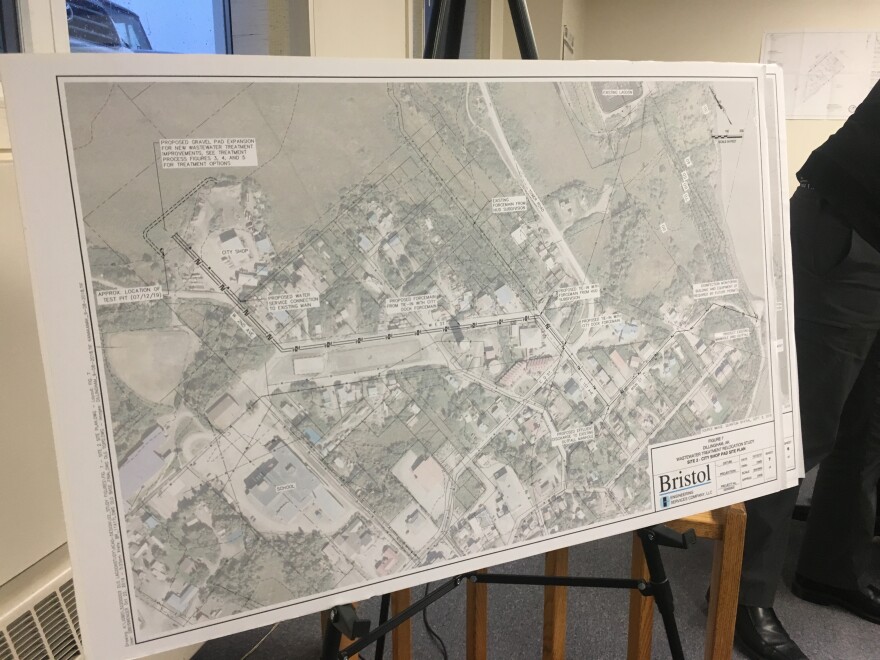Erosion is eating away the coastline by Dillingham’s sewage lagoon. The city council held a meeting with contract engineers to discuss options for the lagoon before it’s too late.
Sitting near the shore of the Wood River, the Dillingham sewage lagoon is causing problems. City Manager Tod Larson said the lagoon is not producing enough oxygen to treat wastewater and is falling short of the state’s air quality requirements.
“There’s a set of baffles and some aerators right now –they’re not functioning properly," Larson said. "Dissolved oxygen is what that generates and we’re going to pull all those things out and replace them with a new set of baffles, bubblers and a new aeration system that will do that deed for us. Get us where we need to be for our regulatory requirements.”
Now, the city is on track to finish an aeration project by fall 2020 with the help of a $355,000 grant from the Alaska Department of Environmental Conservation. Aeration is a process whereby air is used to de-contaminate pollutants in wastewater.
But the looming threat of erosion could wipe all of that away in 12 to 15 years. That’s according to both the U.S. Army Corps of Engineers and CRW Engineering Group, which is based in Anchorage. Since 1947, erosion has washed away at least 800 feet of Dillingham’s coastline. And it’s getting worse.


Gabe Dunham, with the Alaska Sea Grant at University of Alaska Fairbanks, has studied the coastline by the lagoon since 2016. In a project with the Alaska Sea Grant, Dunham and three other scientists installed three transects, including a camera, to measure how much land is being lost.
In May, Dunham measured 17 feet from the bluff to the camera. He returned at the end of September with environmental scientists Todd Radenbaugh and Eric Goddard for another measurement. At transect one, the bluff lost five feet in five months.
The coastline is losing between 15 and 20 feet a year. At the city council meeting in October, Dunham said storm events in the spring and fall are accelerating erosion.
“If you look at extreme high tides that coincide with wind events the tide will push the water right up to that tundra grass line right there," he said. "It kills the tundra.”
In August of 2018, a storm with 55 mph gusts eroded 15 feet of the bluff in one area from transects one and two, plus 10 feet from transect three in one night.
The city is weighing three options. They could use a “Defend In Place” plan, and build a wall along the bluff. Engineer Andy Horazdovsky said that barrier would protect the coastline around the lagoon.

“So about 2500 feet long is what we’re currently envisioning. Following the terrain of the existing contours of the erosion," Horazdovsky said. "Then we’re showing both options. What you see here is the sheet pile with these back piles for support and then the gravel fill option with armor rock. Both of these would have an access road along the top.”
Building the seawall would take up to two years and would cost around $26 million.
Other solutions include building a new lagoon elsewhere. There is space available by the city shop located by West 2nd avenue. The city could choose another aerated lagoon or switch to package plants, which leave a small environmental footprint and cost around $11.5 million to build.
But the plants may not be the most effective option. Vanessa Wike from Bristol Engineering says that communities across Alaska struggle to keep maintenance operators. If something goes wrong with these plants, it could take days or weeks to repair. Operators must be able to respond within 24 hours of an accident.
“It is something that requires highly skilled operators who you’re able to maintain for a really long time,"

Wike said. "And you’re going to need multiple ones.”
The city could also build a large, $28 million sewage system near Kanakanak Hospital that would integrate into the hospital’s system.
But Mayor Alice Ruby contends that the “Defend In Place” option may be inevitable.
“Cause if it takes ten years to put in a new lagoon do you think that is going to survive? I don’t think we’re going to have much time. So anyway, there’s a moderate amount of protection we’re going to have to do on this one anyway. No matter what happens. If we’re going to armor it for ten years, let’s armor it for 50. It could be cheaper than building a new lagoon.”
The city council does not yet have a timeframe for a decision.
Contact the author at tyler@kdlg.org or 907-842-2200




